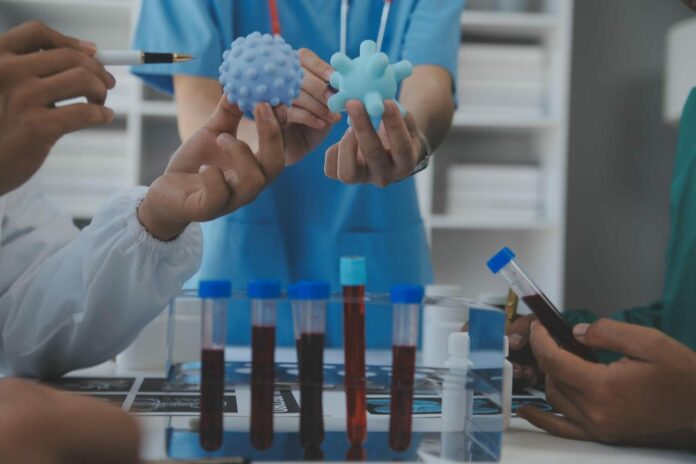A big group of scientists from different countries got money from the EU to study a new way of checking for a type of cancer in kids called neuroblastoma. They want to see if a simple blood test can find the cancer early when it comes back, helping the kids survive better.
This is a big deal because it’s a new and easier way to check for cancer in kids, and it’s a step forward compared to how we check for cancer in grown-ups. In the Netherlands, about 25 kids get diagnosed with neuroblastoma each year, and half of them have a type that often comes back after treatment.
Dr. Lieve Tytgat, a pediatric oncologist and research group leader specializing in neuroblastoma, said, “To avoid children receiving treatment that has stopped working, it is essential to keep a close eye on the possible recurrence of the cancer. This is currently still done with scans or bone marrow biopsies. These tests are invasive for the child, and we cannot do them too often. So-called liquid biopsies can offer a solution. You can learn a lot about the tumor from blood or urine samples, which we can take much more frequently and more quickly from a child.”
Tytgat and colleagues from Vienna are leading a group of 25 European research institutes. They’re studying liquid biopsies in children with neuroblastoma, a type of cancer. The Princess Máxima Center and the Austrian St. Anna Children’s Cancer Research Institute are in charge of the project, coordinating with SIOPE, the European Society for Pediatric Oncology.
Thanks to EU funding, this research is the first of its kind globally, using liquid biopsies for children with solid tumors. While liquid biopsies are already standard in adults, this study is a big step forward for children with cancer, helping them catch up with the progress in adult cancer research.
“Cancer leaves tiny bits of its genetic material in blood and pee,” Tytgat explains, “We want to see if we can use these bits to tell if the cancer is coming back in kids with neuroblastoma after their treatment.” In the study, all kids will get regular tests like MRI scans and bone marrow biopsies every six months. Half of them will also get a blood test every month.
Tytgat said, “We’ll compare the results to ensure the blood test can find the cancer coming back, maybe even before the regular tests can.”
Neuroblastoma is tricky to treat when it comes back because the tumor cells have many DNA changes. In this study, they’re also looking for specific DNA changes linked to drugs that could help. Tytgat adds, “We want to find the cancer early and, if possible, give each child a better treatment that suits their specific tumor.”
Neuroblastoma cells leave different kinds of genetic marks, like in DNA and mRNA. The team, led by Tytgat, is building on what they know about mRNA changes. Now, they’re searching for new DNA marks or combinations of DNA and RNA changes that can pinpoint tumor cells even better. They’re also working on a digital tool to ensure the research fits well with real-world medical practices. In the future, this tool will help doctors decide the best treatment for each child based on the liquid biopsy results.
